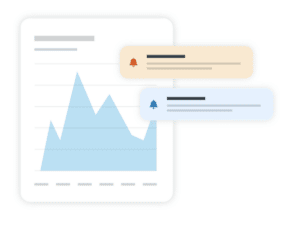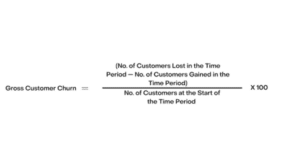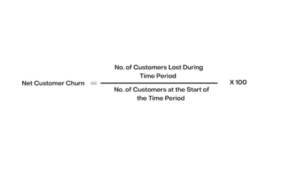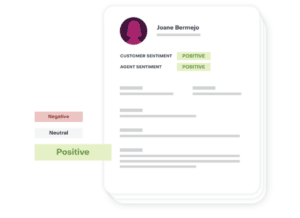Why Are Your Customers Leaving? 8 Simple Ways to Prevent Churn
Customer churn happens when organizations fail to meet customer expectations. Companies are shifting their priorities from growth at all costs to adding value for their existing customers. Knowing precisely the points at which a prospect is most likely to convert is vital, but identifying customers at the risk of churn could be the secret to surviving in this post-pandemic era.
What Is Churn Rate?
Customer churn is a simple concept, a metric that helps you understand the health and coherence of a business. The churn rate is the percentage of customers who abandon your product or service over a given period.
There are only two possible ways of churn in the SaaS market: through cancellation or when the subscription ends, and there is no renewal. If a customer cancels, you still have a chance to win them back before their subscription ends. It’s much easier to get back a customer who still has access to your product than one who can no longer log in. They have chosen you among other options in the first place and have experience using your products. If you understand why they left, you might find a solution to change their mind.
What to Use Churn Rate for?
Your churn rate reflects the value of the service and features that you’re offering. Churn rate can be used to indicate your company’s long-term outlooks by identifying changes that adversely affect customer retention. Churn rate also helps determine which customers are most successful with your product and forecast your company’s achievements.
Customer churn rate directly impacts your revenue churn rate. A high churn rate means your business loses customers, affecting your revenue growth, customer lifetime value, and acquisition costs.
- Monthly recurring revenue (MRR) indicates your company’s viability in the long term, so keep in mind that if customers leave, your revenue decreases.
- Customer lifetime value (CLV) indicates the profitability of your company. A growing customer CLV—entailing a low churn rate—means that customers are happy with your collaboration.
- Customer acquisition cost (CAC). Customer churn increases your CAC because you risk losing your customers before you can redeem the money you spend to convince them to signup.
How to Calculate Churn Rate
There are many ways to calculate customer churn rate, some of which are quite entangled. This complexity might result in wasted time and lost opportunities. You can try instead to understand the foundation of your customer churn rate and how your teams can impact that number.
The first thing is counting customers, which can get tricky because of new signups and cancellations during a selected period. Two widely used churn rate formulas are gross churn and net churn.
Gross Customer Churn
The gross churn rate doesn’t differentiate between new and old customers and counts only the total reduction in the customer base.
It’s a good business overall health indicator, although this metric has its flaws. For example, new customers might exceed the number of lost customers, but the gross customer churn won’t highlight this.
Net Customer Churn
Net customer churn is a helpful metric in understanding how well companies retain their customers. But this formula doesn’t consider customer acquisition.
Make sure you constantly apply churn rate calculations to compare monthly and yearly evolution. To succeed in your approach to churn, you must be consistent in the measuring method you have used.
Churn rate may also vary with the seasonality of your business, and you must wait until you’ve gone through several cycles to start making sense and building a retention strategy.
8 Ways to Reduce Churn Rate
Customer churn is a symptom of an organization’s inability to provide a compelling and consistent customer experience across all customer touchpoints and throughout the customer lifecycle. A bad experience diminishes your brand value and hurts both retention and revenue.
Let’s look into eight efficient methods to reduce the customer churn rate:
1. Figure out why customers churn
The scary truth that our research revealed is that 55% of companies cannot identify customers at risk of churn until they’re gone. Overcoming customer flight begins with knowing when customers start feeling unhappy with your product. Yet, more than half acknowledge that they cannot track, quantify, or prevent churn—and don’t understand why customers are leaving their ranks in the first place.
Every customer interaction is a decisive moment for identifying the gaps between customer expectations and what they actually experience. Implementing CX processes and data collection to close this gap is critical to understand the potential for churn and take the right steps to improve retention.
2. Revamp your customer onboarding plan
With the onboarding process, you start setting the fundamentals of your relationship. Make your new customers trust your brand, and build solid, churn-proof connections. Calculating churn rate from the first month allows you to spot whether onboarding processes run smoothly or need to be revamped.
3. Provide perks for existing customers
Consider offering extended subscription services. It’s an excellent opportunity to prove your value long-term. You may also provide free trials on new features and upmarket plans to make them feel they’re getting the best bang for their buck.
4. Identify at-risk customers
Gathering key data points that indicate how a customer engages (or doesn’t engage) with your brand may apprise you of potential churn risk. Deploy AI-driven predictive intelligence to alert you about red flags (e.g., keywords suggesting irritation such as “never,” “unpleasant,” “awful”) and revive your engagement with tailored marketing (personalized messages, follow-up calls).
There are situations when a downgrade is a valid option. It is better than losing the customer outright, and a simpler, easier plan might better suit their budget and needs.
5. Identify your most valuable customers
Marketing has the greatest insight into how each customer is engaging with your brand, such as what content is being downloaded and what type of events they’re attending. Sales have keener insights into product and business-related needs that influence every deal.
Identify your most valuable customers by enabling better scoring account opportunities, tracking conversion rates, and sharing customer preference insights. Once you’ve created an Ideal Customer Profile (ICP), start exploring up-sell and cross-sell opportunities to accommodate their needs.
6. Pay attention to customer complaints and reviews
Besides traditional feedback sources like post-call surveys, explore new sources to gather new actionable insights. Identify customer sentiment indicators, cross-referencing with peer review sites, social media, and Net Promoter Score (NPS), and employ customer advocacy tactics.
7. Show customers what makes you stand out from competitors
Personalize outreach and re-align value proposition through coordinated sales and marketing activities. Value propositions should be tight, focused, and customer-based. Create marketing campaigns to help you stand out among your competitors and inform your customers about technology upgrades to prevent them from exiting your brand.
8. Provide better customer service
Organizations must develop a more customer-centric business philosophy through better communication and great customer support. Track service performance in real-time, such as speed of response and time to resolution, and take action when service might be lacking.
Enable Self-Service portals to offer your customers an easy way to engage with your company on their preferred terms.
Combat Churn Rate with SugarCRM
By creating a high-definition customer experience (HD-CX), you can more ably shape customer sentiment with your company on a fundamental and personal level and ensure better customer retention over the long haul.
A unified CRM allows sales, marketing, and service teams to predict customer churn and trigger proactive actions to retain profitable customers and drive revenue growth. Get in touch with our team if you want to learn more about how to stem the tide of customer churn.



